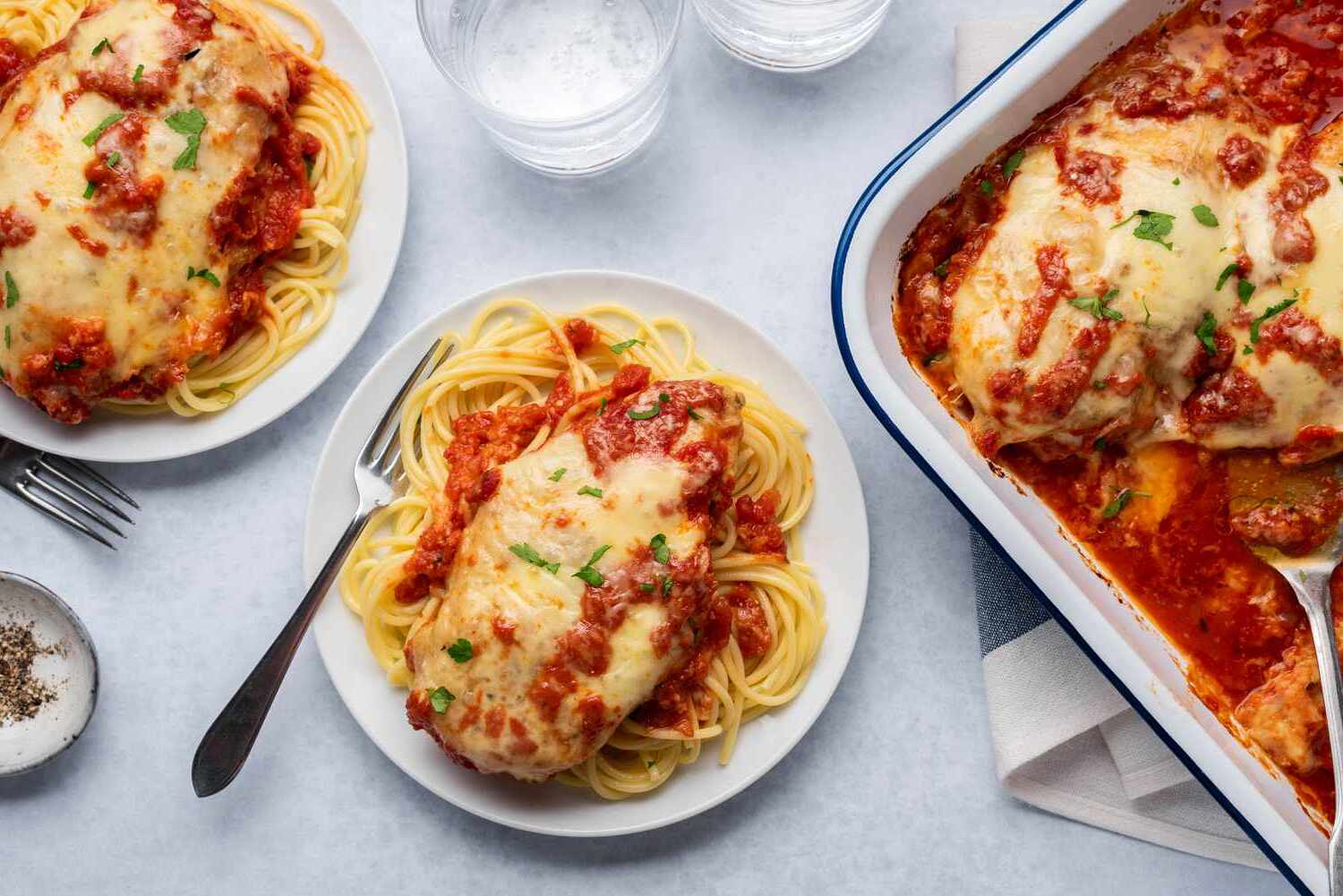
Ever wondered how many calories are packed into that deliciously crispy, cheese-covered chicken parm you're about to devour? Well, you're not alone! Chicken Parmesan, a beloved dish worldwide, often leaves diners curious about its nutritional content, especially when trying to balance indulgence with healthy eating habits. Chicken Parmesan calories can vary widely, depending on the ingredients and preparation methods used. From the thickness of the chicken to the type of cheese and even the serving size, each component plays a crucial role in the calorie count. In this engaging read, we'll uncover the mysteries behind the calorie content of this popular dish, offering insights that might surprise you. Whether you're a fitness enthusiast or just love to enjoy good food, understanding the calorie makeup of chicken parm is both interesting and useful. So, grab a fork, and let's dig into the facts!
Key Takeaways:
- Chicken Parm can range from 500 to 1,300 calories, so be mindful of portion sizes and ingredients to enjoy it without overindulging.
- Making healthier choices like baking the chicken, using whole wheat breadcrumbs, and adding more veggies can help lower the calorie count of Chicken Parm.
What Exactly Is Chicken Parm?
Chicken Parm, short for Chicken Parmesan, is a beloved Italian-American dish that combines breaded chicken breasts with pasta sauce and melted cheese. Often served over spaghetti, this hearty meal has become a staple in restaurants and kitchens across the globe. But with its delicious taste comes the question of calorie count, which leads many to wonder about the nutritional impact of indulging in this comfort food.
How Many Calories Are in Chicken Parm?
-
A typical serving of Chicken Parm can contain anywhere from 500 to 1,300 calories. This wide range depends on factors like the size of the chicken breast, the amount of breading, and the types of cheese used. Mozzarella and Parmesan are traditional choices, but their quantities can significantly affect the total calorie count.
-
Restaurant portions often lean towards the higher end of the calorie spectrum. With generous servings and extra cheese, a single plate from a dining establishment might fulfill a significant portion of an adult's daily caloric intake.
What Factors Influence the Calorie Content?
-
The type of breading and depth of frying play a crucial role. Chicken breasts coated in thick breadcrumbs and deep-fried absorb more oil, increasing the calorie count compared to those that are lightly breaded and baked.
-
Cheese variety and amount also matter. Full-fat cheeses add more calories; using reduced-fat options or less cheese can make the dish lighter.
-
Serving size is key. A larger chicken breast means more calories. Opting for a smaller portion can help manage calorie intake.
Can Chicken Parm Be Made Healthier?
-
Yes, by baking instead of frying the chicken. This method reduces the amount of oil absorbed during cooking, cutting down on calories.
-
Use whole wheat breadcrumbs for the breading. They offer more fiber and nutrients than their white counterparts, making the meal more filling and nutritious.
-
Opt for low-fat cheeses. They can provide the same cheesy goodness with fewer calories.
-
Add more vegetables to the dish. Incorporating veggies like spinach or zucchini into the pasta sauce boosts its nutritional value without adding many calories.
How to Enjoy Chicken Parm Without Overindulging
-
Portion control is essential. Consider eating half a serving and saving the rest for another meal.
-
Pair it with a side of vegetables instead of pasta. This swap can significantly reduce the meal's overall calorie count while still satisfying your hunger.
-
Choose a lighter sauce. Tomato-based sauces are generally lower in calories than cream-based ones. Look for versions with no added sugar to keep the calorie count in check.
-
Be mindful of the cooking oil. If you must fry, use oils with a high smoke point and beneficial fats, like olive or avocado oil, and drain the chicken well to remove excess oil.
The Bottom Line on Chicken Parm Calories
-
Chicken Parm can fit into a balanced diet with careful modifications. By making smarter choices about ingredients and cooking methods, you can enjoy this classic dish without derailing your nutritional goals.
-
Awareness and moderation are key. Knowing the calorie content and making adjustments based on personal health objectives allows for a guilt-free enjoyment of Chicken Parm.
A Final Nibble on Chicken Parm Calories
Chicken Parm, a beloved dish worldwide, packs more than just flavor. It's a calorie-dense meal, with variations in preparation leading to significant differences in nutritional content. Opting for baked over fried versions, or choosing a side of veggies instead of pasta, can make this comfort food a bit friendlier on the waistline. Remember, moderation is key. Enjoying Chicken Parm as part of a balanced diet allows you to savor its deliciousness without overindulging in calories. Next time you're about to dig into this cheesy, saucy delight, think about the choices that can help keep your meal both tasty and healthier. After all, being mindful of what's on your plate ensures you can enjoy your favorites while keeping health in check.
Frequently Asked Questions
Was this page helpful?
Our commitment to delivering trustworthy and engaging content is at the heart of what we do. Each fact on our site is contributed by real users like you, bringing a wealth of diverse insights and information. To ensure the highest standards of accuracy and reliability, our dedicated editors meticulously review each submission. This process guarantees that the facts we share are not only fascinating but also credible. Trust in our commitment to quality and authenticity as you explore and learn with us.


